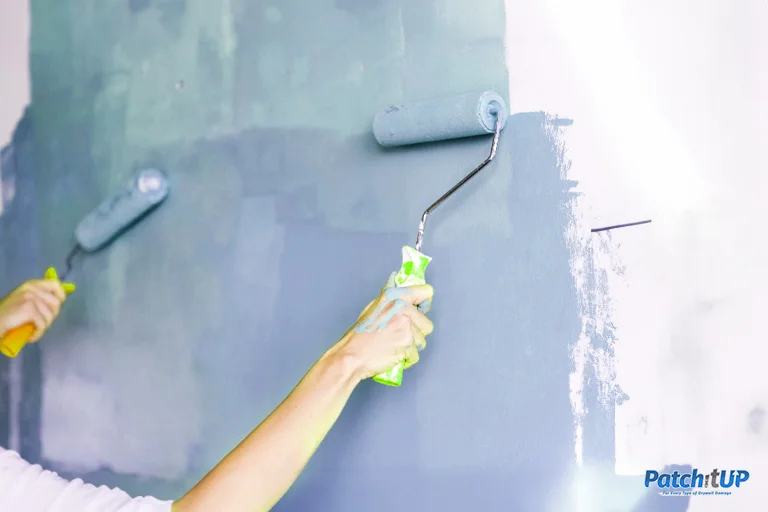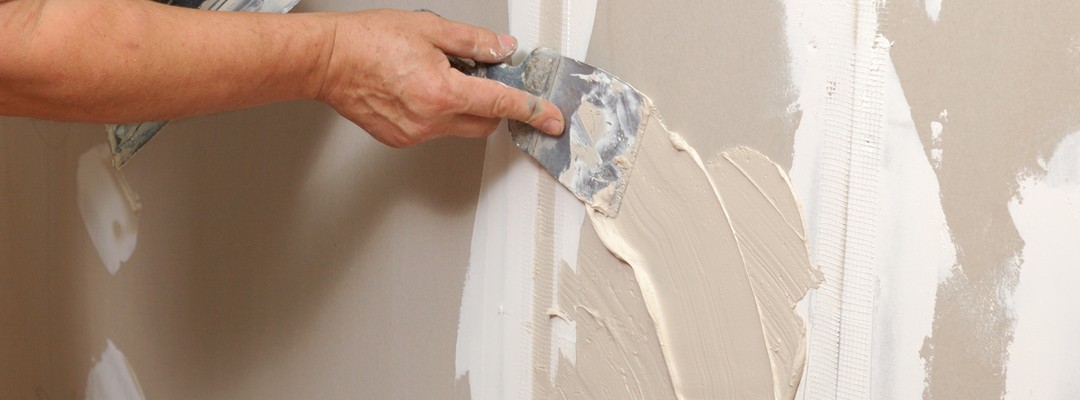Crucial Tips for Effective Drywall Repair and Installment Strategies
Efficient drywall repair service and installation requires a careful approach. Understanding the kinds of drywall and having the right tools is vital. Accurate dimensions and appropriate methods can significantly impact the result. Lots of ignore necessary actions like taping and sanding, which can make or break the last appearance. As projects proceed, typical challenges might arise that require focus. Checking out these tips can lead to a more effective and sleek surface.
Comprehending Different Sorts Of Drywall
Recognizing the numerous sorts of drywall is important for any kind of successful fixing or setup task. Drywall, frequently referred to as gypsum board, comes in numerous ranges tailored for specific applications. Requirement drywall is the most widely used type, suitable for basic indoor walls and ceilings. Moisture-resistant drywall, commonly environment-friendly in color, is designed for locations vulnerable to moisture, such as washrooms and cooking areas. Fireproof drywall, usually colored pink or purple, is crafted to stand up to greater temperatures and is commonly used in garages or near heating systems. In addition, soundproof drywall helps minimize sound transmission, making it ideal for multi-family homes or taping studios. Specialized drywall, like cement board, is utilized in wet locations like showers or tub surrounds. Comprehending these types aids in choosing the ideal material for every project, making certain longevity and efficiency out of commission or new installments.
Important Tools for Drywall Repair Work and Installment
Having the right devices is essential for efficient drywall repair work and setup. A high quality utility blade is essential for cutting drywall sheets specifically. A drywall T-square aids assure straight edges, while a taping blade is essential for applying joint substance smoothly over joints. In addition, a drywall saw enables removing harmed areas or fitting drywall around fixtures.
For hanging drywall, a power drill with drywall screws is important, as it makes it possible for fast and secure setup. A degree is also important to validate that the drywall is straight and properly lined up. Once it has actually dried, a sanding block or pole sander is important for smoothing out joint compound. Lastly, a gauging tape is essential for precise dimensions, protecting against waste and ensuring a proper fit. Equipped with these devices, people can tackle drywall jobs effectively, causing professional-looking results.
Step-by-Step Overview to Fixing Holes and Cracks
When dealing with openings and splits in drywall, having the right tools and products is important for an effective repair service. This guide lays out the needed things and supplies a clear, step-by-step process to properly restore the surface area. Understanding these components will help assure a smooth finish and long-lasting results.
Devices and Materials Needed
A fully equipped toolkit is crucial for reliable drywall fixing and setup. Key tools include an utility blade for cutting drywall, a tape procedure to guarantee exact sizing, and a drywall saw for larger holes. A putty knife is vital for applying joint compound efficiently, while a fining sand block or pole sander assists attain a smooth surface. For patching, a roll of fiberglass mesh tape or paper tape is required to reinforce joints. Additionally, a drill and screws are required for safeguarding brand-new drywall items. Crucial products include joint substance, guide, and paint to complete the fixing. Having these tools and materials available ensures a smoother, a lot more reliable repair process, producing professional-looking results.
Repair Process Steps
Fixing holes and fractures in drywall calls for a methodical strategy to assure a smooth finish. First, the location bordering the damages ought to be cleansed extensively to get rid of dust and particles. Next, for little cracks, a putty blade is made use of to use a joint compound uniformly over the area. For bigger openings, a spot is required; the harmed section is reduced out, and a new piece of drywall is suited place, secured with screws. As soon as the patch remains in position, joint compound is used to blend the edges. After drying, sanding the location smooth is vital. The repaired surface area needs to be keyed and painted to match the bordering wall surface, making sure a low-profile repair.
Techniques for Setting Up Drywall Panels
Mounting drywall panels requires cautious preparation and exact execution to assure a smooth and expert coating. It is necessary to gauge the wall space properly and cut the panels to fit, guaranteeing that they line up with the studs. Placing the panels flat is commonly advised, as this can enhance the architectural honesty and reduce the variety drywall contractors of joints.
Making use of drywall screws, installers ought to secure the panels every 16 inches along the studs, making certain a company hold. It is essential to avoid overdriving the screws, which can damage the paper surface area. For edges and edges, making use of an utility knife enables tidy cuts and a tight fit.

Finishing Touches: Insulation, Mudding, and Fining sand
When the drywall panels are securely in area, the next essential action involves the complements of taping, mudding, and sanding. Taping is essential for developing a seamless change between panels and concealing joints. A top quality drywall tape, either paper or fiberglass mesh, must be applied over the joints, ensuring it sticks correctly to the mud that will be used following.
Mudding, or using joint compound, adheres to the taping process. This substance fills up voids and smooths out the surface area. A first layer must be applied generously, feathering the edges to blend with the drywall. After the initial layer dries, succeeding layers may be required for a remarkable surface.
Lastly, sanding is needed to achieve a smooth surface area. A fine-grit sandpaper ought to be made use of to delicately ravel any kind of flaws. Treatment ought to be taken to avoid over-sanding, which can damage the drywall - Interior Painting. Properly performed, these completing touches produce a specialist appearance prepared for paint
Tips for Preserving Your Drywall After Installation
Maintaining drywall after installation is vital click for more info to preserving its appearance and architectural honesty. Routine cleansing is essential; dust and dirt can accumulate, so mild wiping with a moist fabric is advised. House owners ought to also check for any indicators of wetness or mold, specifically in high-humidity areas like kitchens and washrooms. If any type of damages happens, it's important to resolve it quickly to avoid further concerns.
Using furnishings pads can assist prevent scrapes or dents from heavy things. In addition, repainting the drywall with a high-quality, cleanable paint gives an extra layer of defense and makes future cleansing much easier. Avoid using rough cleansers or devices, as these can harm the surface. Finally, maintaining a stable indoor climate with ideal humidity degrees will assist prevent buckling or fracturing gradually. By complying with these pointers, one can guarantee that drywall stays in exceptional problem for years to find.
Often Asked Inquiries
How Lengthy Does Drywall Take to Fully Dry After Setup?

Can I Install Drywall Over Existing Drywall?
Yes, drywall can be set up over have a peek at this site existing drywall, but it is important to guarantee the underlying surface is protected and effectively prepared. This technique can boost insulation and minimize setup time, though it may add weight.
What Is the Best Way to Soundproof Drywall?
The most effective way to soundproof drywall entails utilizing specialized soundproofing products, such as resistant networks, acoustic caulk, and sound-dampening drywall. These methods efficiently minimize sound transmission in between spaces, improving general acoustic efficiency in living rooms.
How Do I Choose the Right Drywall Density?
To select the ideal drywall thickness, consider the application and area. Requirement domestic walls typically use 1/2 inch, while ceilings or specialized areas may require 5/8 inch for added toughness and soundproofing capacities.
Exist Eco-Friendly Drywall Options Available?
Yes, environment-friendly drywall options are readily available. These include items made from recycled products, plaster boards with low unpredictable organic substances (VOCs), and those utilizing lasting production processes, supplying environmentally-conscious options for construction and renovation tasks.
Having the right devices is crucial for reliable drywall repair work and installment. For hanging drywall, a power drill with drywall screws is crucial, as it enables safe and fast installment. Trick devices consist of an energy blade for cutting drywall, a tape procedure to ensure exact sizing, and a drywall saw for bigger holes. Yes, drywall can be set up over existing drywall, but it is important to assure the underlying surface area is safe and appropriately prepared. The ideal means to soundproof drywall entails making use of specialized soundproofing materials, such as resilient channels, acoustic caulk, and sound-dampening drywall.